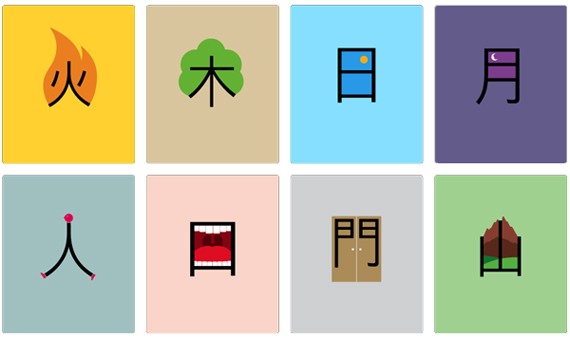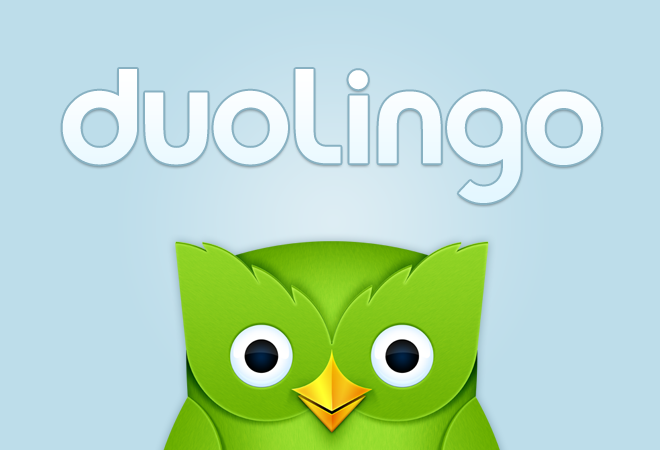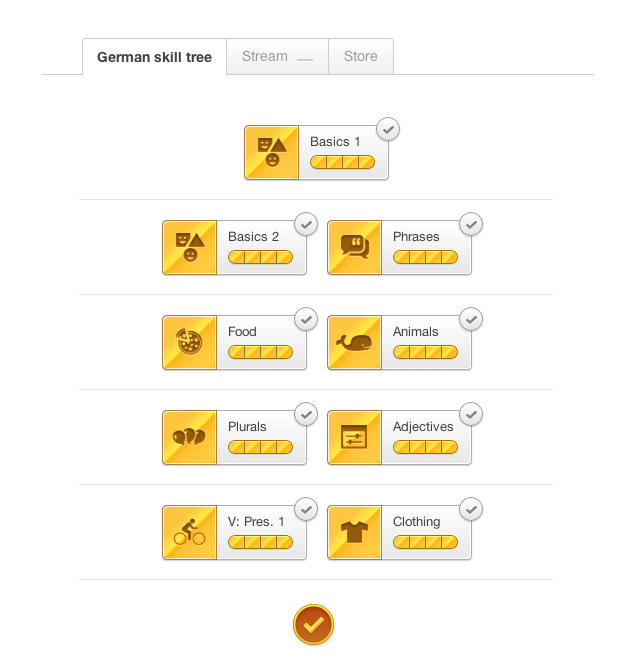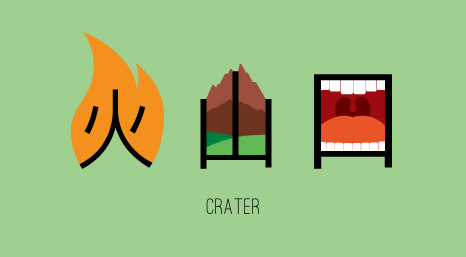-

-

-

-

-

-

-

-

-

-

-
-

-

-

-

-

-

-

-

-

-

-

-

-

-

-

-

-

-

-

-

-

-

-

-

-

-

-

-

-

-

-
-

-

-
 TOTW: Google's Project Ara Modular Phone May Be The Future Of SmartphonesOctober 30, 2014
TOTW: Google's Project Ara Modular Phone May Be The Future Of SmartphonesOctober 30, 2014 -

-

-

-

-

-

-

-

-

-

-

-

-

-

-
-
-

-

-

-

-

-

-

-

-

Posts tagged languages
AOTW: Duolingo, An Easy, Free Way To Learn Languages
0Learning a language is always hard. Especially after the age of about 14, you mind hardens, making it harder for other information to make it’s way in. Fortunately, technology has it’s way of making most of life easier, including learning languages. Since you probably grew up only using one language, it is hardwired into your mine. Just the fact that I am writing this right now is amazing, considering how many words I have memorized over time, if you think about it. Everyone does, but how much information you mind has been storing for thousands of years longer than computers have is astonishing.
Enough philosophy. A common program that is bent on helping people learn new languages is the famous Rosetta Stone. It’s a computer program that drills the language into your brain having you fill in sentences, with pictures underneath to give you a hint. It is perfectly fine….besides the fact that it is over $100. Very expensive. So otherwise you wanted to take lessons, it is pretty much your only option. Until now.
Duolingo is a free app for iOS and Android that has same objective as Rosetta Stone, yet a slightly different approach. As part of the lessons, Duolingo the picture approach, but only for filling in the word and gender for current languages, German, Italian, Spanish, French and Portuguese. Most of the Duolingo lessons are set in packets, such as basics, plurals, animals, and number. These packets are each set in a way so that you know sufficient information to fill in the rest of the sentence, while also learning the new words. Inside the packets, there are lessons, with each lesson teaching about 5-6 words. Each lesson is made up of a couple of different types of problems such as translating the sentences (with hints), repeating sentences using the microphone, and probably the most common, translating sentences by picking words out of a batch. There are many others, and this variety makes you learn every aspect of the language to move on. There are just enough hints so that if you don’t know it, you don’t pass. In each lesson, there are 20 questions, with which you only have 3 lives. If you lose all your lives, you have to start over again.
The great thing about Duolingo is that it is very social. Every time you correctly complete a lesson, you earn 10 XP, plus 1 extra for remaining lives. Your XP is tracked by day, week and month so you can track your usage and learn curve, and once you get a certain amount, you go up a level. You level is your rank in Duolingian society, and the higher rank you have in the most languages the better. You can even compete with your friends and see who has the most XP overall, in the week, and the month.
Even though Duoling is a great app, they also made a computer version for people really into it. It is built right into the browser, and you can complete lessons and packets just like on the mobile version. The only difference is that the online version has many other side-features that can be very useful. For instance, you can go over the words you have mastered and see which ones are overdue for a revisit, which is easily done, and have discussions about Duolingo and give feedback with other users. Another unique feature in Duolingo is that immerse yourself in article in your language, and even translate them. All these features give Duolingo a step ahead of any other language program.
Duolingo is always growing. Now that Duolingo has started the Incubator, anyone can sign up to contribute to a growing course. Right now, most growing courses are English in another language, such as Russian or Japanese. Sooner or later, though, there will be more languages so that you can try out as many different languages as possible and see how they all connect. But just starting the Incubator shows how much Duolingo cares about the public, and how they get the best experience possible.
TechSpot: Chineasy Simplifies The Incredibly Complex Chinese Language
1Out of all the languages, Chinese is probably one of the most complex and hard to learn. In the traditional Chinese language, there is around 13,500 characters to memorize. But, if you’re a solar, you most likely know 20,000 characters. Really, though, you only need 1,000 to have a mostly complete understating of Chinese. As ShaoLan (the creator of Chineasy) explains in her TED talk, 200 characters will get you around easily enough in China. Chineasy uses only 8 basic characters to get you to the goal of 200. Easily.
Chineasy brings the pictograms out of the Chinese language. To an outsider (and even most people that can read Chinese), the Chinese is more of a art than a language. The symbols look like random lines placed around each other. But way back when the ancient Chinese designed these symbols, they actually thought about it. Chineasy cleverly illustrates 8 basic characters. Here they are:

The 8 Basic Characters
Even though they are self-explanatory (which is the whole point of Chineasy), this is what the characters mean from left to right: Fire, Tree, Son, Moon, Person, Mouth, Door, Mountain. Memorizing pictures for all 100,000 characters would not help that much, would it, though? Fortunately, that’s not how the Chinese language is built. For instance, if you take tree, and put another tree beside it, you make wood(s). Then, if you put a third tree on top, you get forest. You can do this for all 8 character, though not exactly in the same way (example: a moon plus another moon equals prosperous because Chinese believe that the moon brings prosperity). So when you’re done memorizing all these characters and their different versions, you will have memorized at least 70 – 100 words. But, it doesn’t stop there.
The way chinese is built allows you to build off of the word you know by making phrases. Not in the English sense. A phrase would be a word like volcano. In Chinese you write it like “fire mountain” which uses the 2 basic words fire and mountain. Plus, to even add on that, there is the word crater, which is written “fire mountain mouth”. There are many many more phrases to follow, so many that they would easily get you to 200 characters. Once you have these characters, you will be able to get the main point of 40% of the Chinese newspapers and things like that. Defiantly good enough for a trip to China. Unfortunately, ShaoLan hasn’t made any real apps or courses yet for Chineasy. But when she does, it will make learning Chinese fun. And easy.




